Seminole County Wilderness Areas- A Review
Thank you for reading Seminole County Wilderness Areas- A Review.
Before anything else is said, I am very happy Seminole County acquired the properties listed below for the enjoyment of folks for whom Disney World is an anathema. All this land would be built out by now, otherwise.
The Black Hammock Wilderness Area is a 700- acre property.
The Chuluota Wilderness Area is a 625- acre natural area.
Black Bear Wilderness Area is approximately 1600 acres.
The Econ River Wilderness Area is a 240- acre property.
The Geneva Wilderness Area is a 180- acre site.
The Lake Harney Wilderness Area is an approximately 300-acre property.
The Lake Proctor Wilderness Area is a 475- acre property.
The Spring Hammock Preserve is an approximately 1,500- acre property.
I have visited Black Hammock, Chuluota, Econ River, Geneva, Lake Harney, and Lake Proctor areas. They all have attractive features that make them splendid places for walks or runs (especially with the dog), or bike rides. I highly commend Seminole County for maintaining these places.
What bothers me about them, and I realize I’m being picky, is the use of the word “wilderness.” Wilderness they certainly are not. Outside of Everglades National Park there is precious little wilderness left in Florida anymore. Even the Everglades has been ditched and logged.
Wilderness includes the most intact, undisturbed wild natural areas left on our planet – those last truly wild places that humans do not control and have not developed with roads, pipelines or other industrial infrastructure.
Calling a 180- acre parcel (or even a 700- acre parcel) that most likely has been logged and farmed a wilderness area does a disservice to the word “wilderness.” It cheapens the word and degrades its meaning. Since I think we need to preserve true wilderness as defined in the preceding paragraph, the County ought to rename these areas as “Woods” or “Preserves.” Good job on the Spring Hammock name, Seminole County!
One other small complaint before I go. Susan and I took a walk today at Black Hammock area. The trail is marked by blue blazes. When I read this, I assumed the blazes were paint. They are actually small metal disks, each one attached to live trees by means of two deck screws.
Whoever did this clearly did not consider the tree’s feelings while driving those screws. Trees are living things- how about a little respect there?
Other than this the Black Hammock trail was mostly lovely, until reaching the loop near the end of the area. Prior to this the trail meanders through palm-palmetto woods with some pines and oaks, with a few very nice trees. Long boardwalks keep your feet dry at the swampy parts. Once that loop starts, though, it’s open, sandy, a dirt road with tire ruts, and has recently been chopped and burned. Not pretty.
When I go back, I will turn around where the loop begins. Aesthetics matter.
That’s the end of the Seminole County Wilderness Areas- A Review. Please let me know your thoughts in the comments section.
John Kumiski
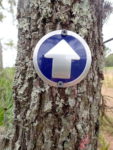
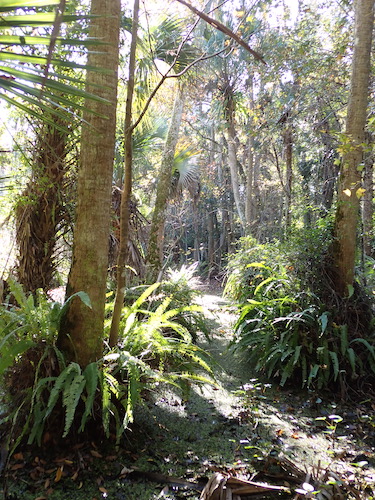
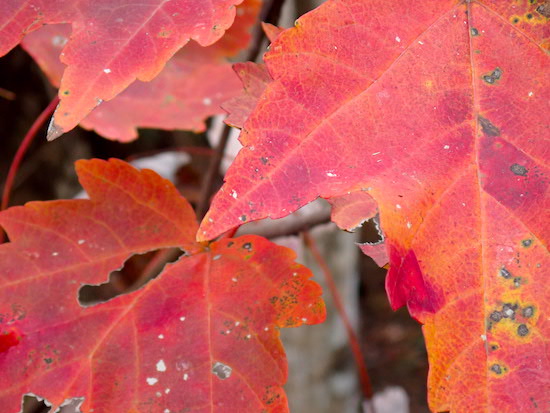

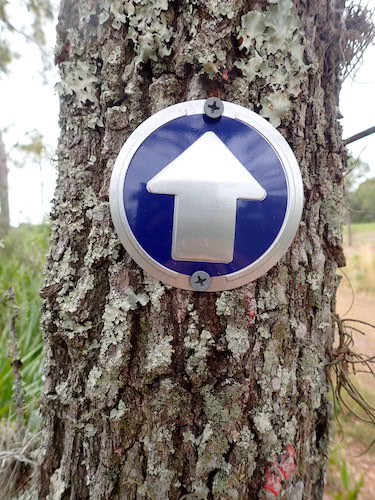

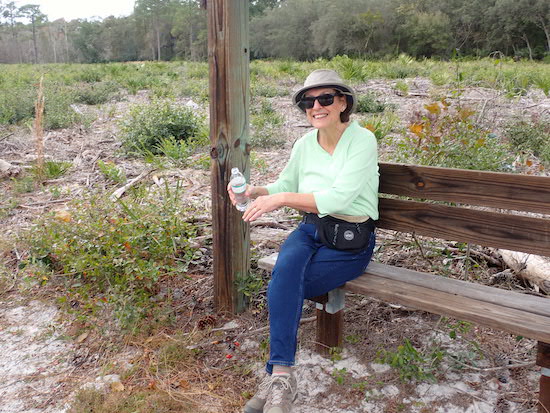
Recent Comments